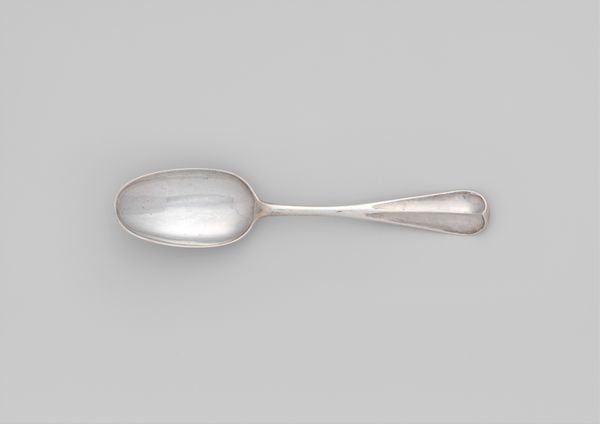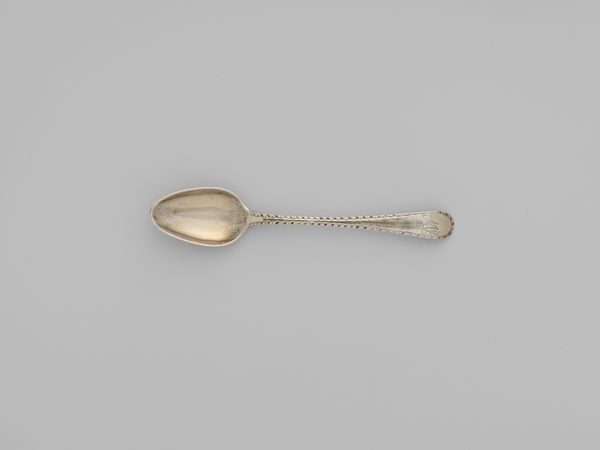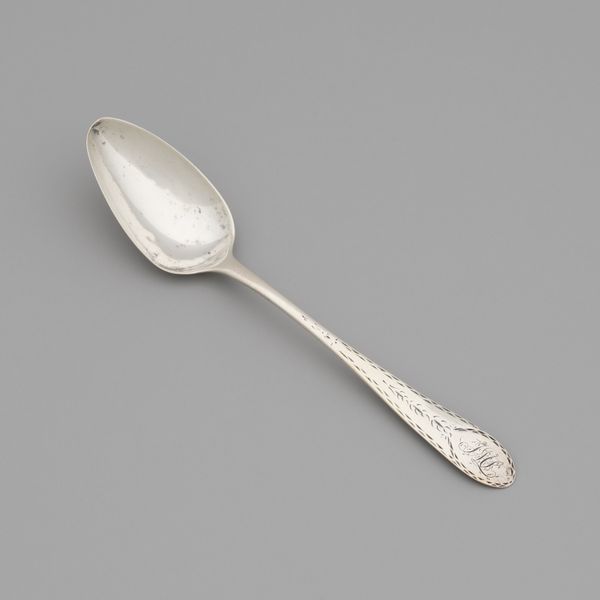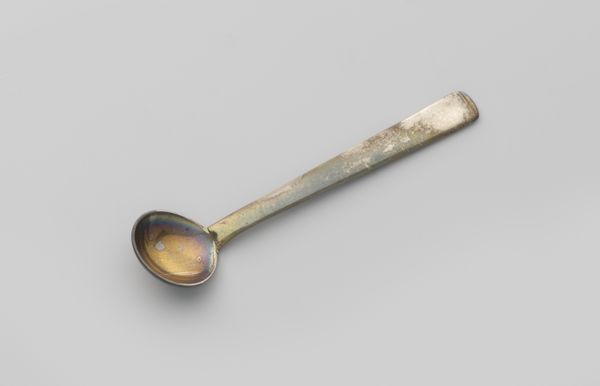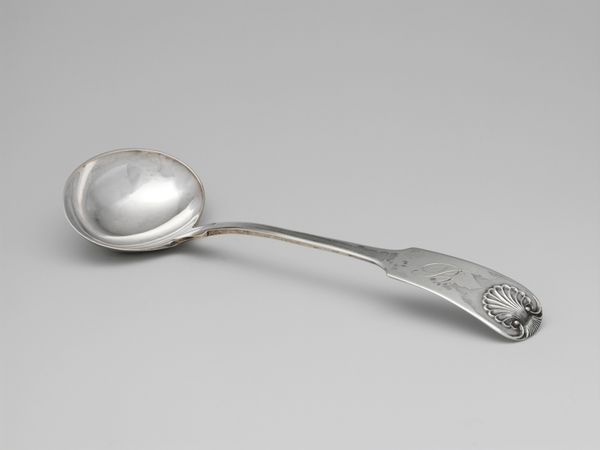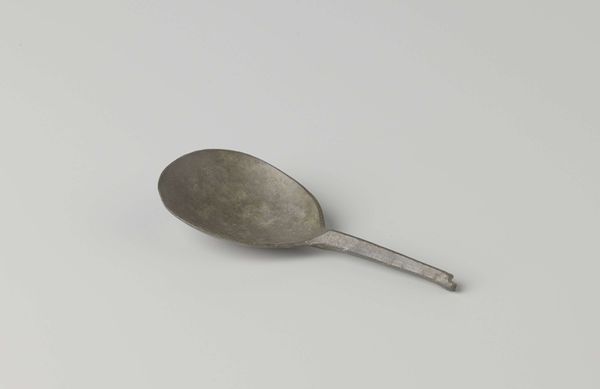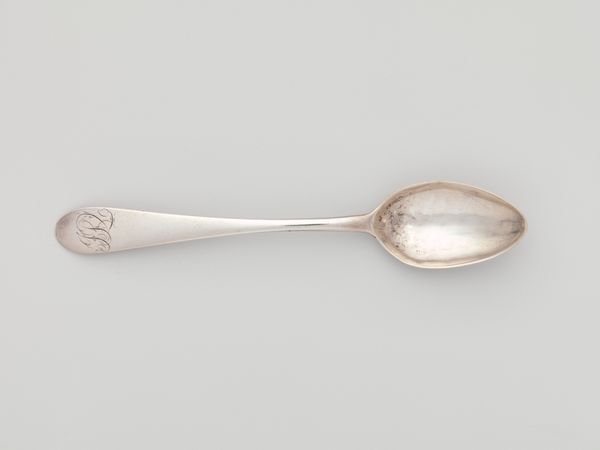
silver, metal
#
clear graphic shape
#
3d sculpting
#
3d model
#
silver
#
3d printed part
#
rounded shape
#
metal
#
plastic material rendering
#
virtual 3d design
#
curved arc
#
3d shape
#
metallic object render
#
decorative-art
Dimensions: length 7.8 cm, width 1.2 cm, weight 13 gr
Copyright: Rijks Museum: Open Domain
Curator: Immediately, I notice how delicate it seems, almost ornamental. Editor: Let's delve into this interesting object. What we have here is a silver scoop, shaped a bit like a coal shovel, made in 1827 by the firm Bennewitz and Zonen. Curator: A coal shovel scoop? That juxtaposition of precious material and utilitarian form is fascinating! Was it common to elevate everyday tools like this? Editor: Precisely! It reflects a broader trend within the decorative arts during the early 19th century. Silverware was used to express wealth and status, with elaborate forms for even the most mundane tasks. Think about the societal role of silverware as display, more than functionality. Curator: So, not really about shoveling coal. What kind of material analysis can we delve into regarding this "silver" piece? Editor: Good question! It seems delicate but is actually quite robust. This robustness is achieved through particular material applications for forming the shapes for daily utilitarian objects. The hammer marks are also a trace of this. Curator: The craftsmanship really stands out. Were these scoops made by individual artisans, or more mass-produced in workshops? Editor: Likely a workshop. The Bennewitz firm probably had skilled silversmiths employing specific techniques, producing items catering to an expanding affluent class desiring luxury goods. Silver-making as both skilled labor and commodity production, merging craft and proto-industrial practices. Curator: So the rising middle class fuelled demand. Interesting how social changes influence the artistic landscape and production methods. Editor: Precisely. The demand drives certain types of artisanal workflows, impacting materiality. By analyzing these artifacts through a socioeconomic lens, we reveal their role as cultural and economic signifiers. It also exposes the hidden labor that went into its construction. Curator: Absolutely, viewing it now I find myself appreciating its historical implications. Editor: Right? Looking beyond simple functionality and noticing material-historical significance grants more understanding. It underscores the intricate relationship between material culture and social change.
Comments
No comments
Be the first to comment and join the conversation on the ultimate creative platform.
